I found a way to up my composition game - Part 1
After receiving rejections in September, I’ve been diving deep into refining my portfolio. One of the areas I’m focusing on is composition.
When I submitted my portfolio back in September, all of my artwork had the same safe, eye-level, straight-on compositions. I understood the basic rule of thirds from my landscape painting practice, but that was about it. I decided I want to push myself further and try to understand the use of composition for the sake of visual storytelling.
I’m a nerd at heart, has always been.
Learning is one of my favorite things in the world. I’m also a huge movie buff and have always appreciated beautiful cinematography on an aesthetic level. So, instead of taking the traditional route of studying old painting masters (not that there’s anything wrong about it!), I decided to dive into animated films and cinematography.
I’ve looked into storyboarding fundamental, started collecting references, rewatching some of my favourite series and movies and breaking down what works, and—most importantly—practicing it.
I began sketching out compositions straight from my favorite movies. The goal wasn’t to copy them exactly, but to understand why they worked. Instead of just drawing more and hoping for improvement, I began analyzing how the pros solved the composition and storytelling problems.
I’m still in the process,and I will be for a long time but I feel that things are starting to click.
First: the storyboard techniques
This could probably be a whole separate article, but I’ll keep it short here. Films and animated storyboards break down storytelling into clear, intentional frames. They use angles, framing, lighting, and perspective to tell a story without using any words. If filmmakers can make an entire scene feel intense, calm, or exciting (often without a dialogue) just by how they frame a shot, why not apply the same principles to illustration?
Second: framing like a filmmaker
A great resource for starting with understanding how cinematography uses composition was a YouTube video: Ultimate Guide to Film Composition & Framing
The video breaks down how different compositional elements like shapes, angles, color, and tone all work together to tell a story.
And the best way for me to learn? Take notes! I opened my iPad and quickly sketched (not-so-pretty) visual notes on compositions and angles.
And from now on I started paying attention to how cinematographers frame their shots.
How do angles build a relationship between the character and viewer (e.g., low angles for power, high angles for vulnerability)?
When do cinematographers zoom in close, and when do they pull back? What impact does that have?
How does character positioning in a scene change the narrative?
How do elements in the background and foreground guide the eye?
Third: practice time!
To practice these new skills, I created a simple story about a fox walking through the forest. Here’s how I structured it visually:
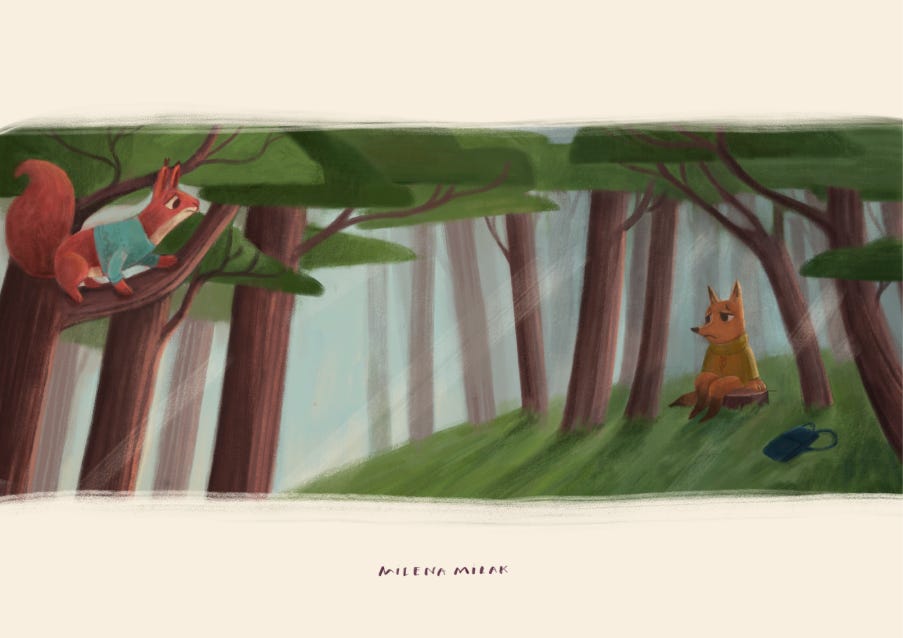
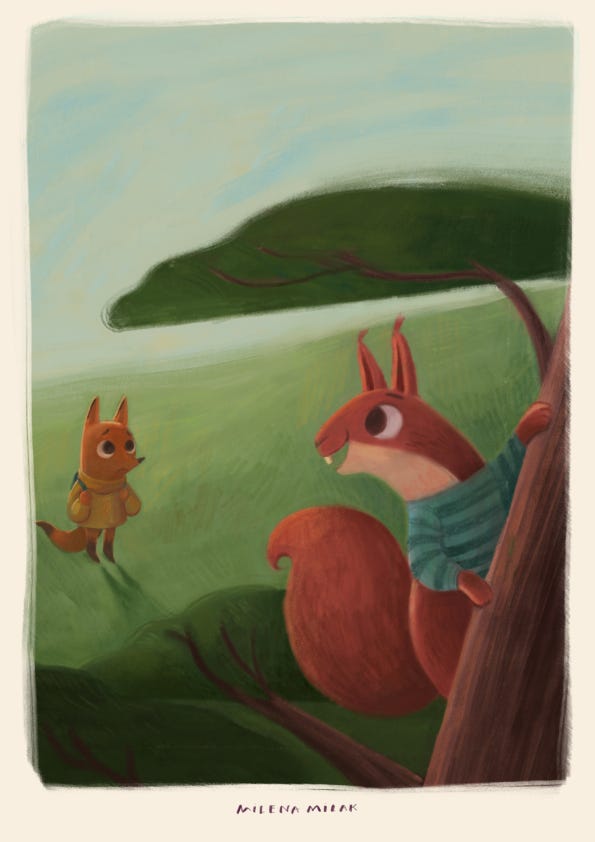
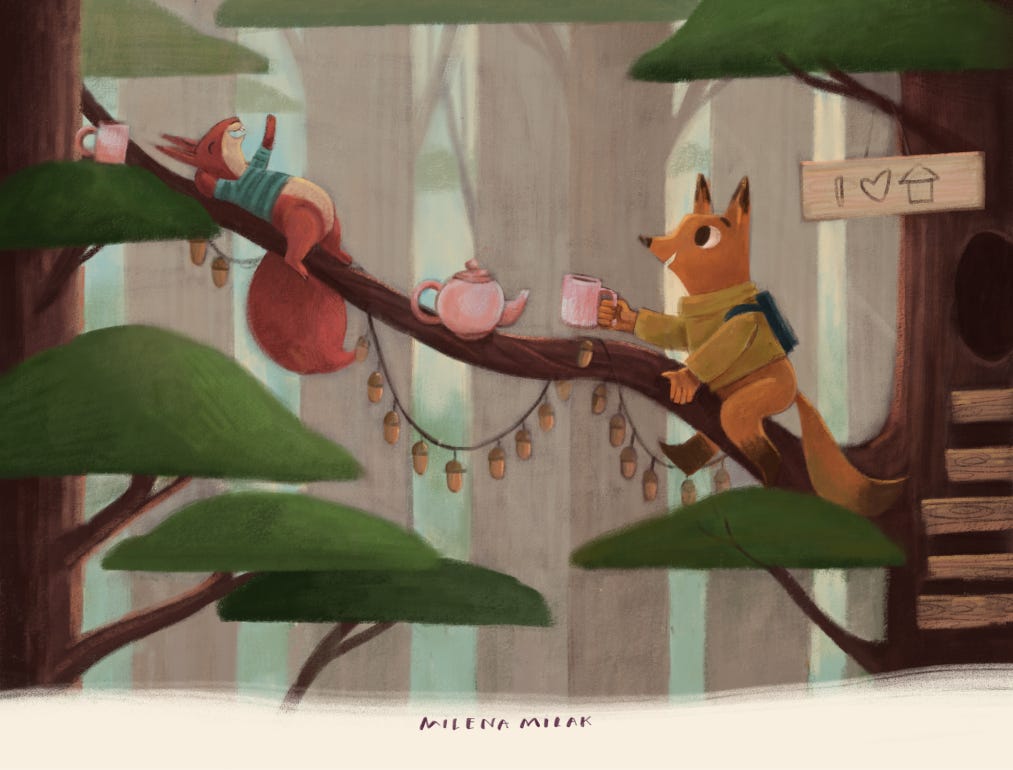
This exercise pushed me to experiment with various perspectives and compositions, showing how they can work together to tell a story without words. I had to break away from static shots and try new angles, which helped me to see…
The progress
I still have a long way to go, but these exercises have already made a huge difference.
If you’re feeling stuck in your art, I recommend trying this: find a movie still (I have a Pinterest board if that helps) and break it down:
What makes it work? What does it say about the character’s relationship? What is the mood? What can you steal from it (in a good way) and apply to your own work?
I’d love to hear from you, have you ever studied film composition to improve your art? Do you have any favorite animated films with incredible composition?
I’d love to hear your thoughts!


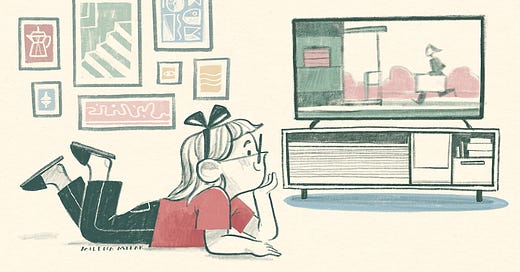



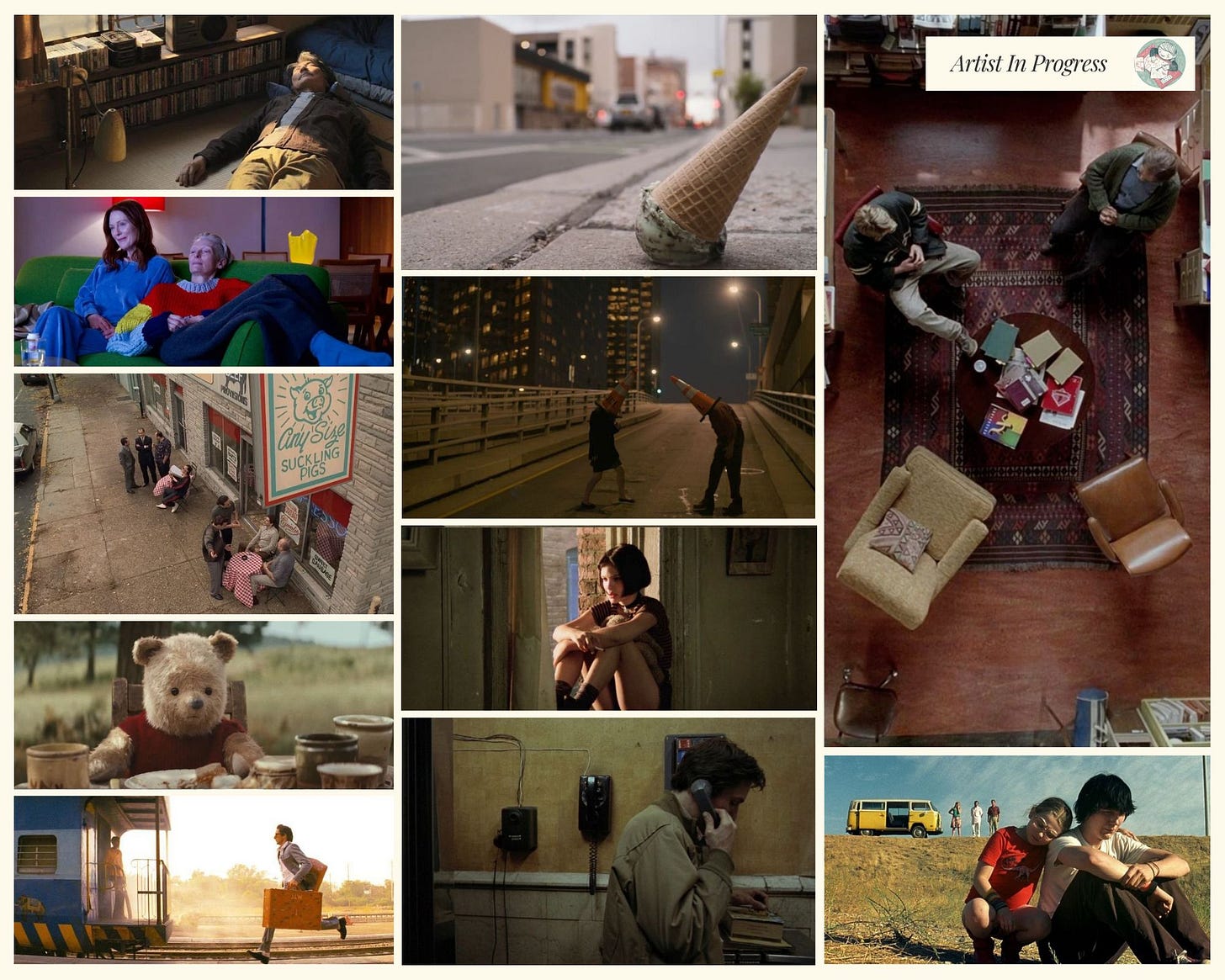
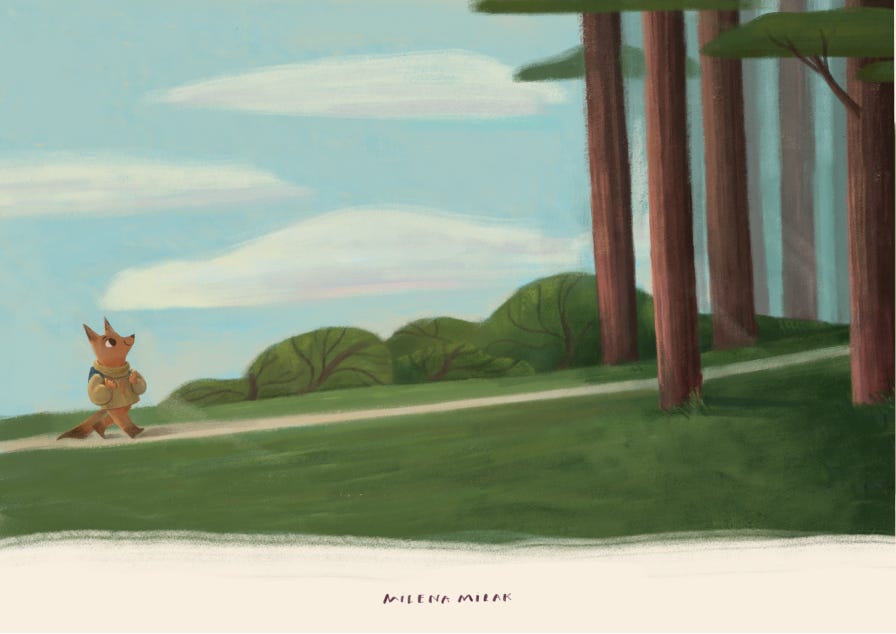
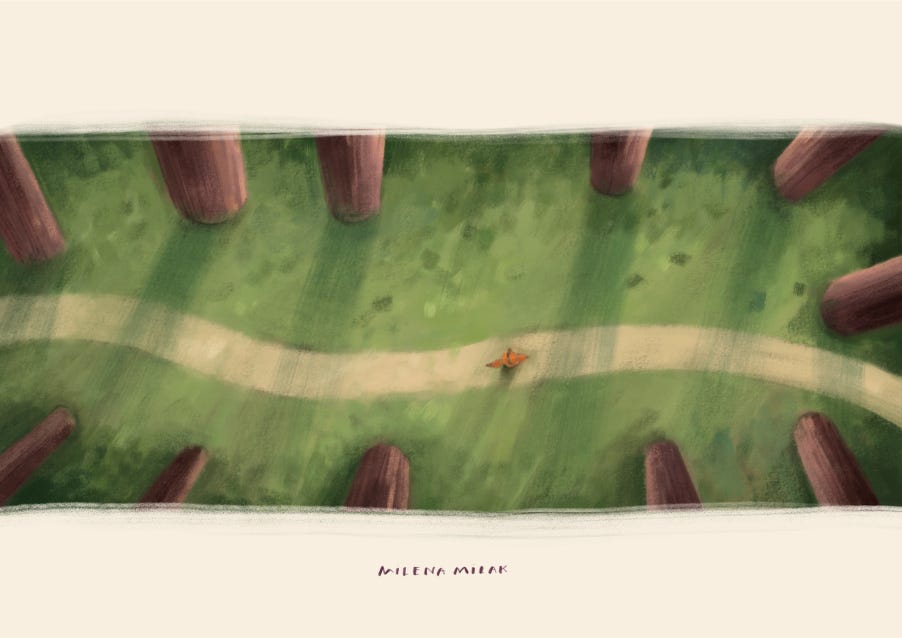
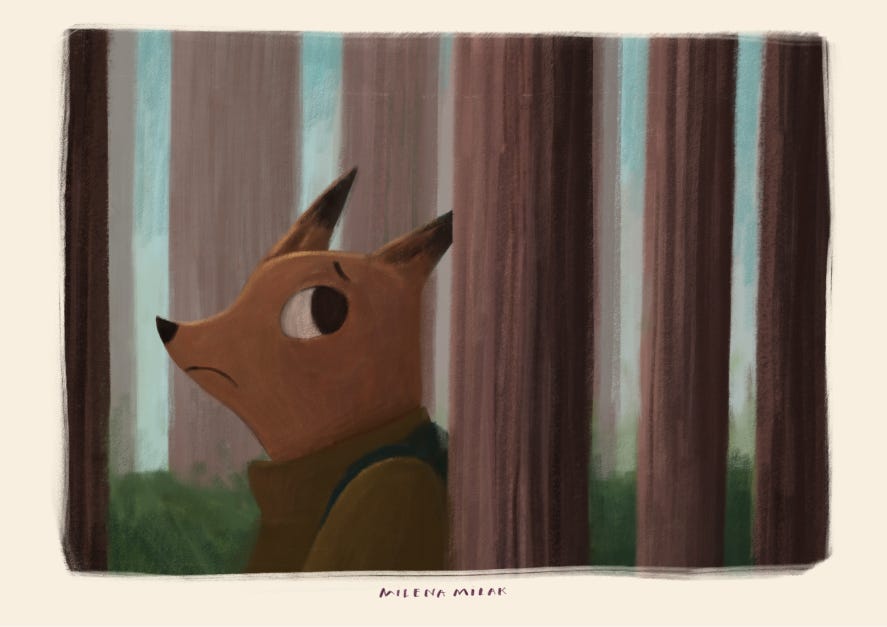
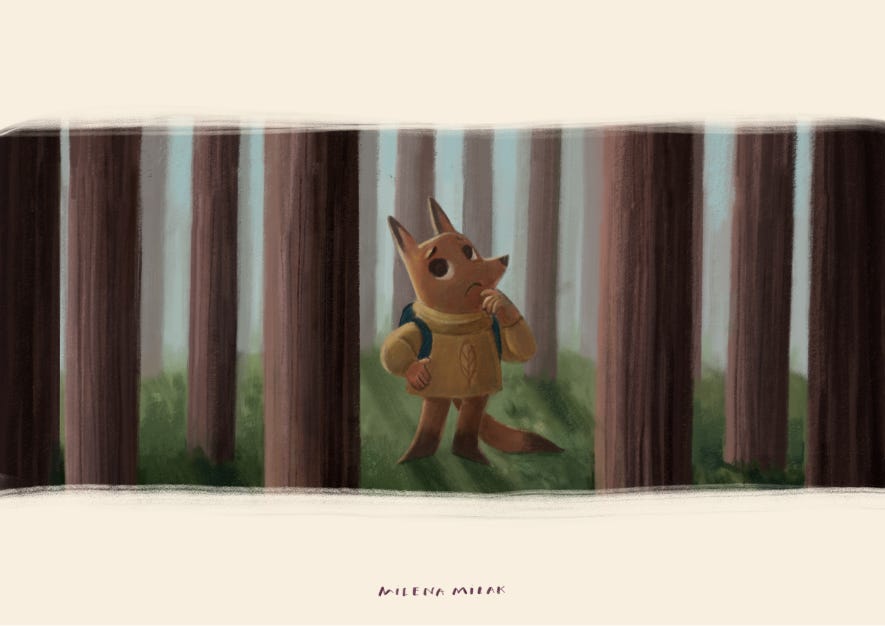
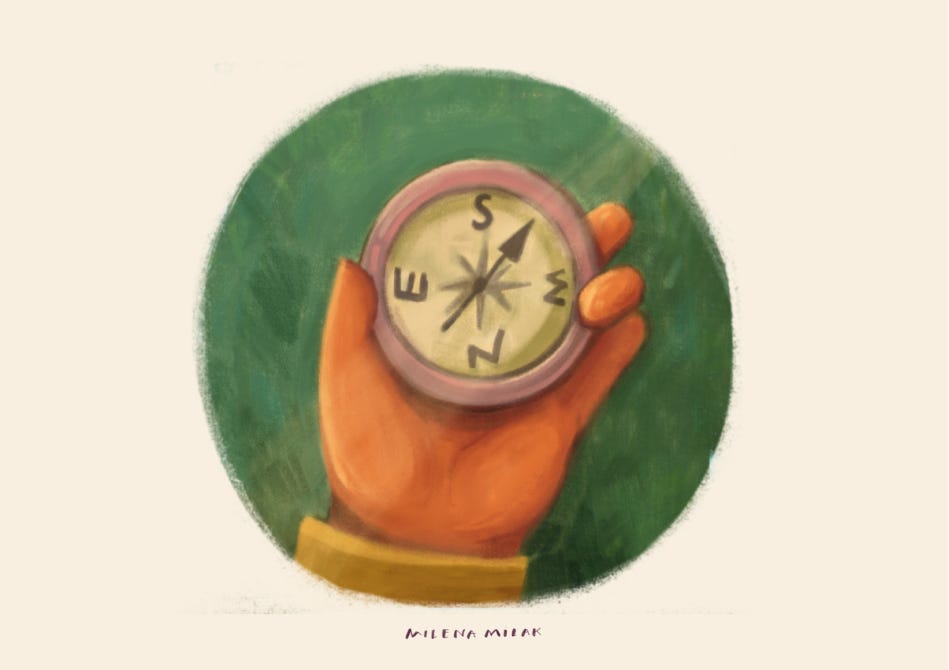

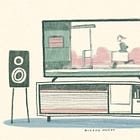
This is such a great approach, thanks for sharing - it’s definitely something I could try myself as I struggle with composition to tell a story
I love this so much. I struggle with creating good compositions, so I definitely will give this practice a shot.